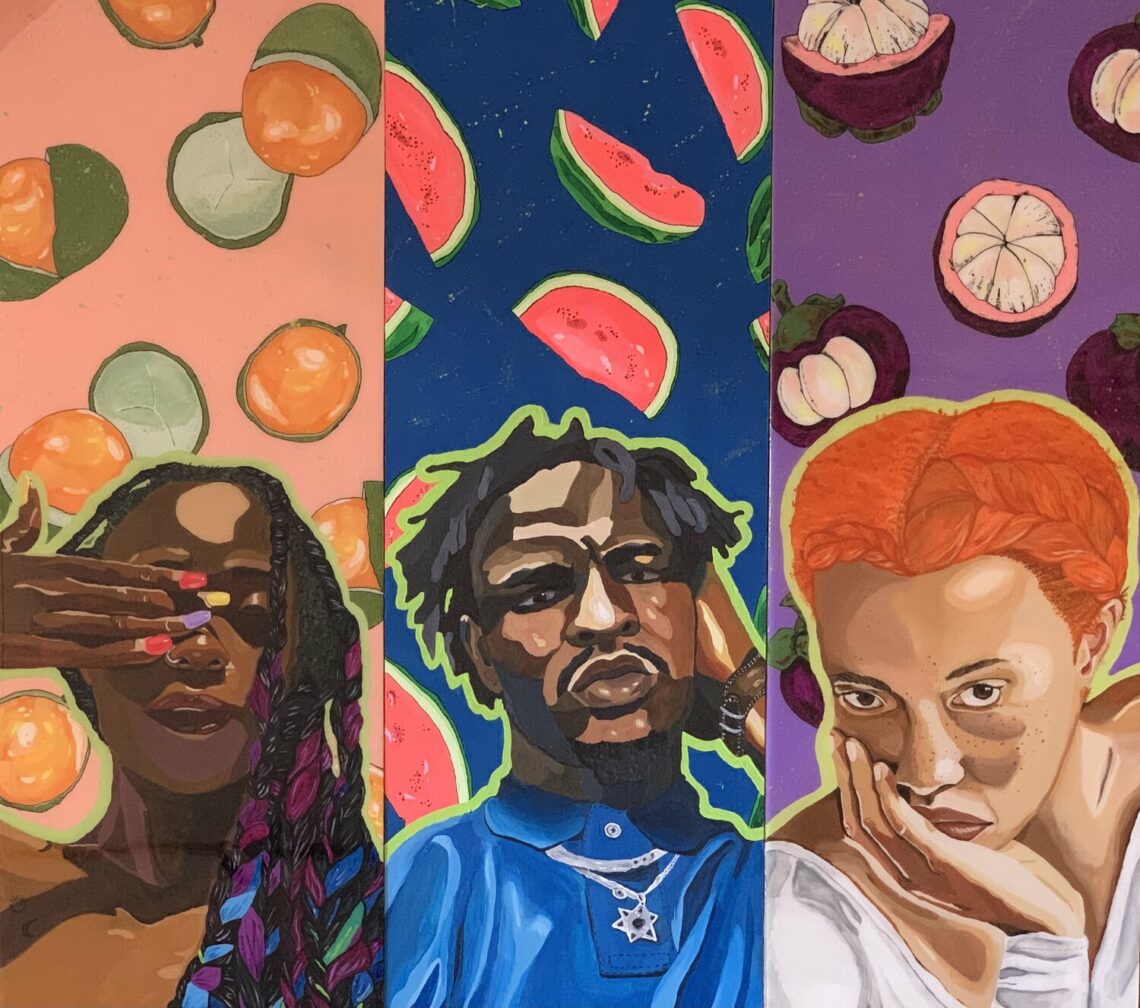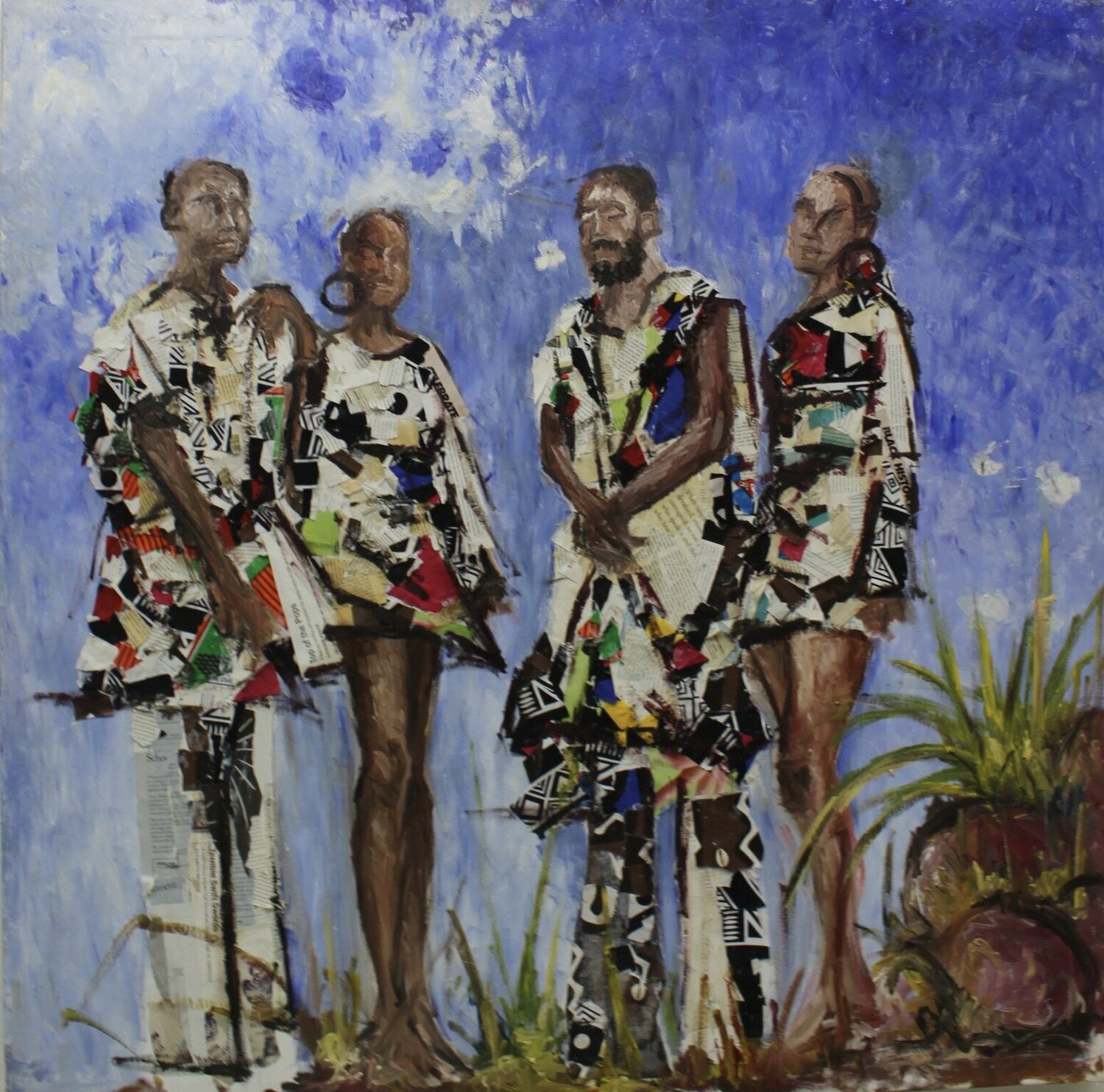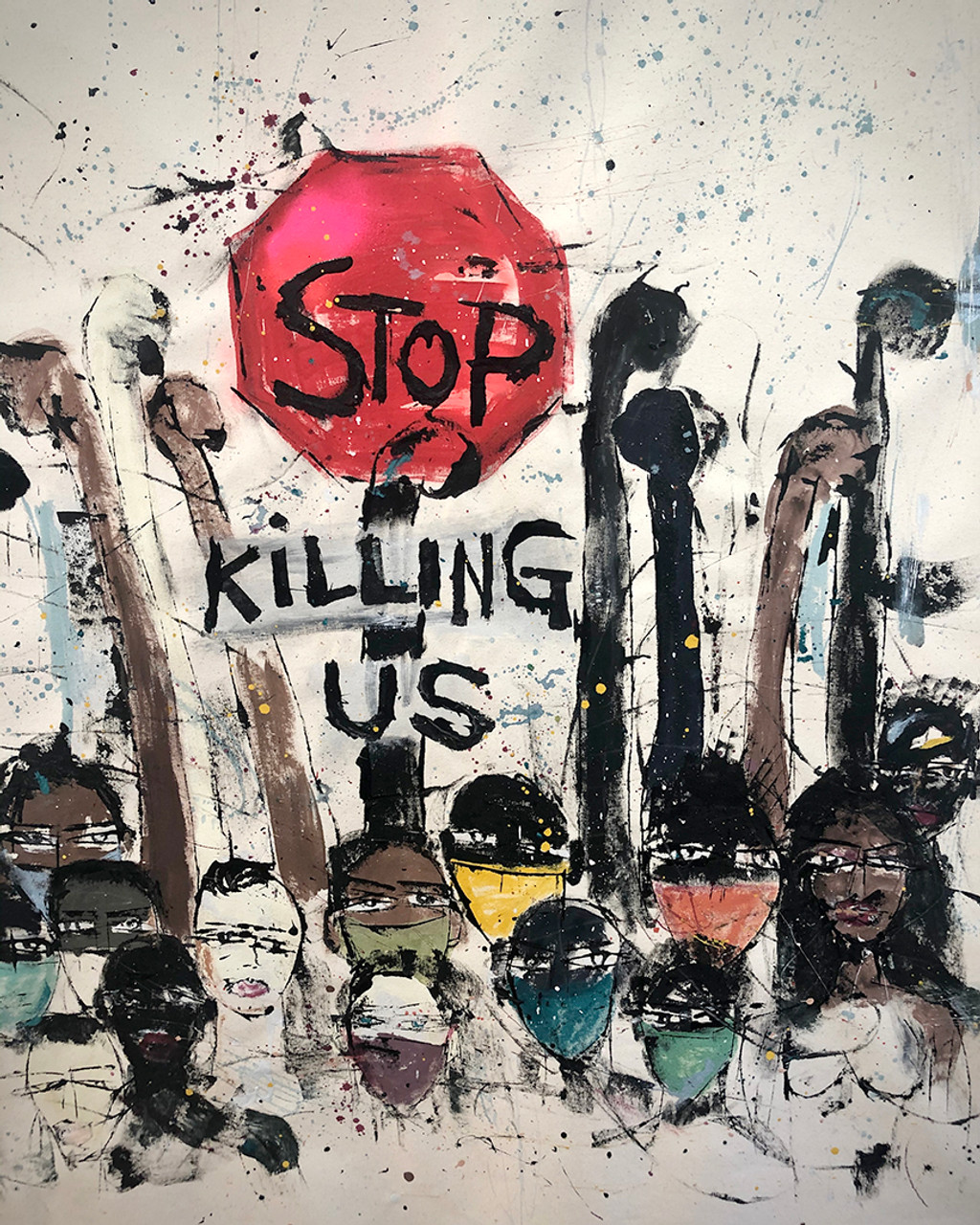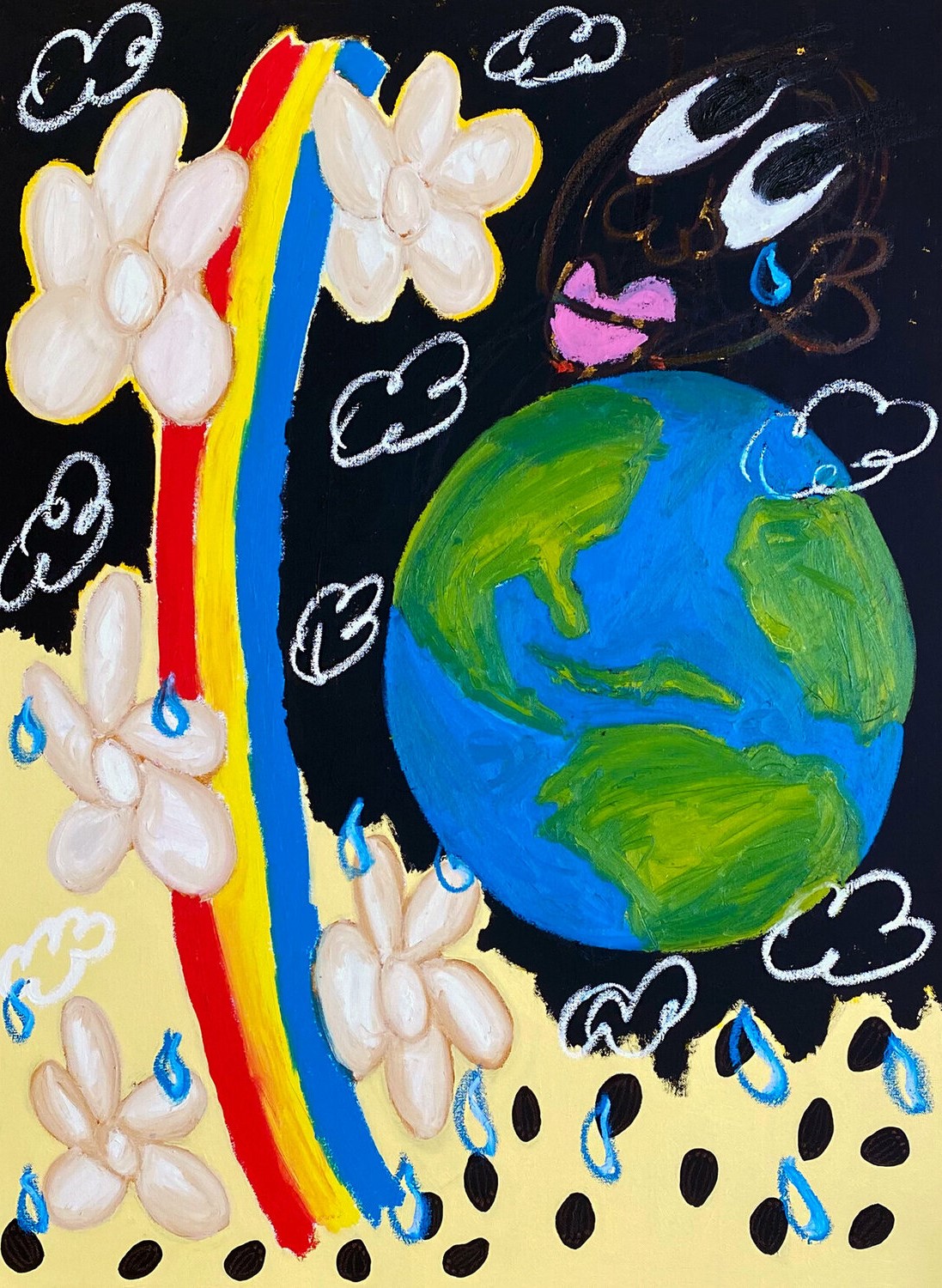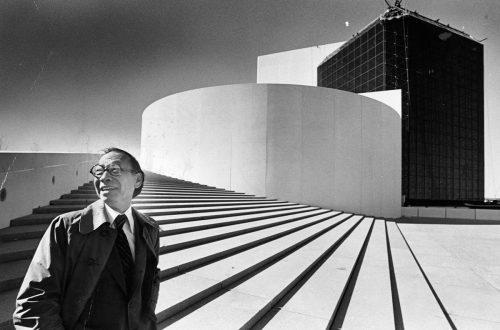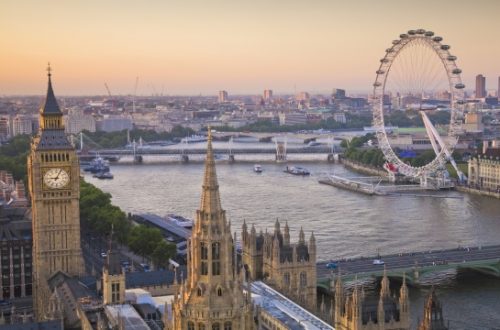At SINGULART, we have always been quite data-driven. So when we decided to celebrate Black History Month this year, we were immediately led to some surprising statistics, which motivated us to do some further investigating…
Featured image: El Mal Que Percibieron (2021), Tafy LaPlanche
Black American artists have historically been underrepresented throughout art history and within the global art market. This is not a new fact, as numerous studies over the years have demonstrated that the majority of art in U.S museums and galleries comprise disproportionately of works created by white males.
Yet, there seems to be some good news. There appears to be a recent and increasing interest and recognition of the work and creative contributions of Black artists. Our team has made it our mission to explore this topic further in order to uncover the available statistics, compile notable milestones, establish any concrete actions being taken, and gather insight to help us take steps towards a more equitable art world.
Here is what we found:
Art World Realities
The 2022 Burns Halperin Report, a study analyzing representation within U.S. museums and the global art market, made the demonstrative argument that the perception of increased art world diversity may be inflated in comparison to the measurable realities.
There have been some major achievements by Black American artists over the past decade that have inspired hope for a changing art world:
- Record-breaking auction sales for legendary Black artists Jean Michel-Basquiat and Kerry James Marshall
- Kehinde Wiley’s and Amy Sherald’s official presidential portraits of the Obamas, the first ever commissioned by Black artists, which increased attendance at the National Portrait Museum by more than 200 percent
- The first ever retrospectives at major U.S. museums of Black American women artists Carrie Mae Weems and Faith Ringgold
- Groundbreaking collective exhibitions of Black art at the Brooklyn Museum and the Museum of Modern Art in New York
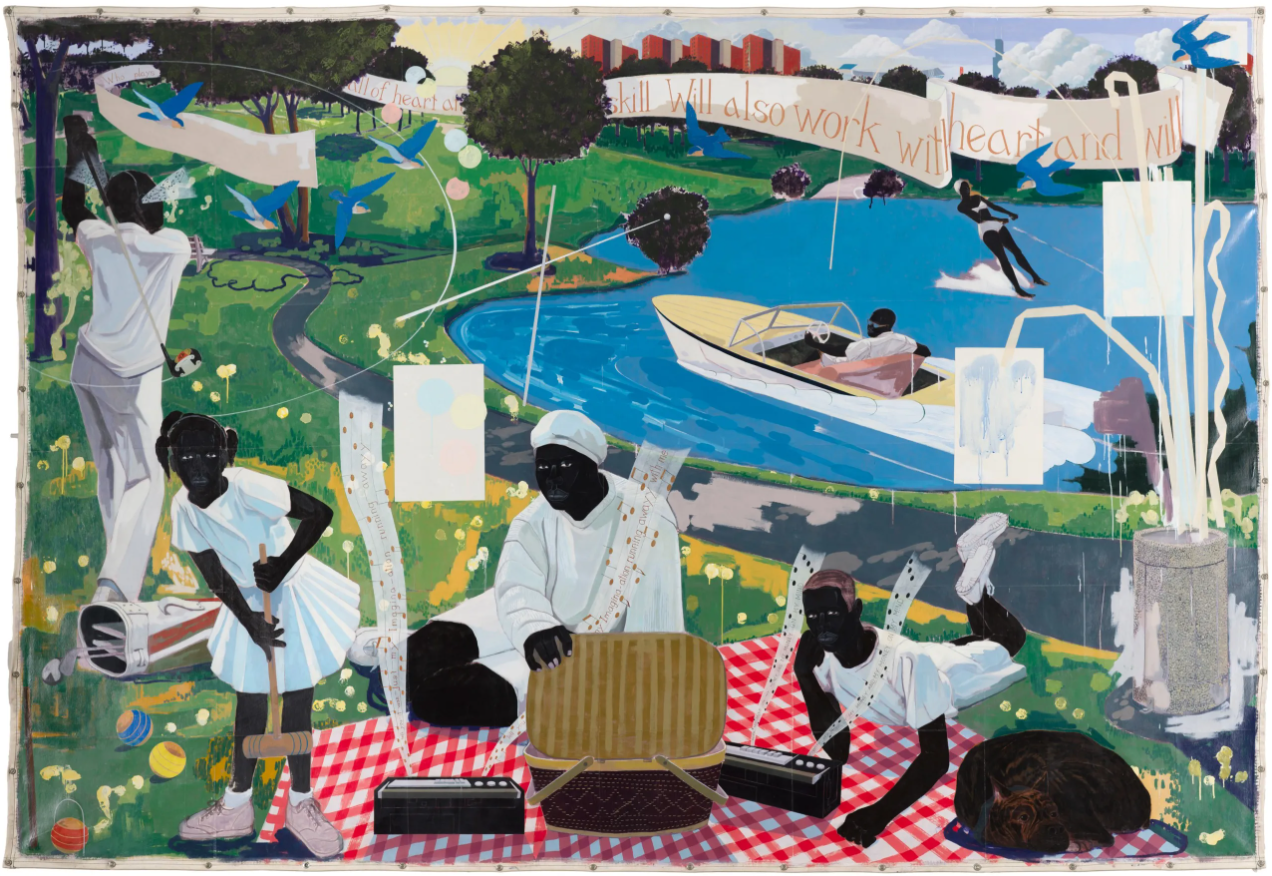
These moments absolutely deserve recognition and celebration.
In French, we have the expression, “c’est l’arbre qui cache la forêt,” which refers to focusing on a few trees at the cost of losing sight of the forest. And, it just so happens that when looking beyond these high-profile moments, the abovementioned report found that the numbers for Black artists as a whole were much less impressive. And this is what we need to confront, because highlighting this reality is critical in order to make change and write the new art history!
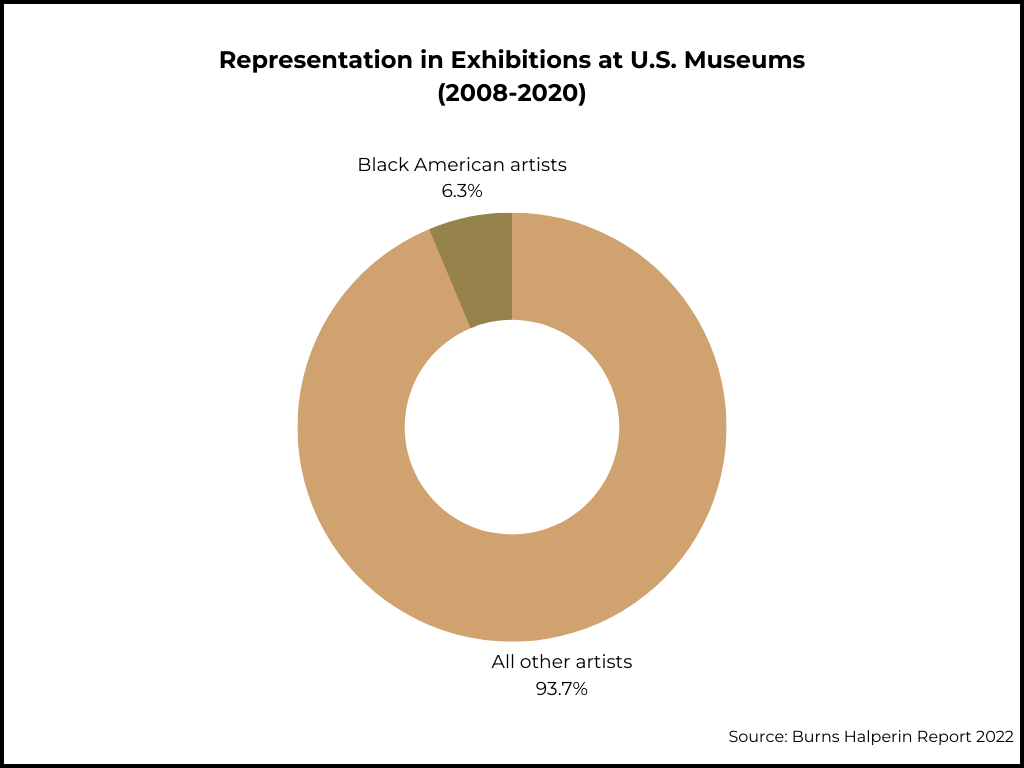
Over the last decade, artwork by Black American artists made up only around 6.3 percent of exhibited works. Only around 2.2 percent of acquisitions at U.S. museums were works by Black American artists, and even lower for work by Black American women, at 0.5 percent. Imagine this with the fact Black Americans make up around 14% of the U.S. population!
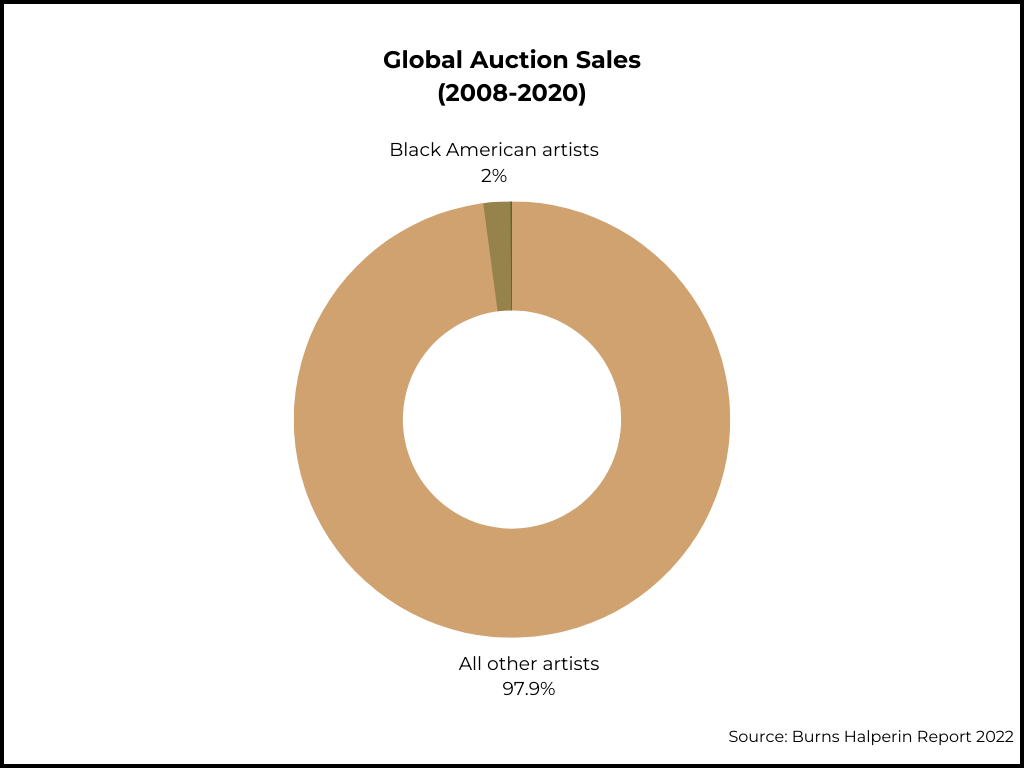
When looking at the international art market, recent findings showed that the combined auction value of work by Black American artists was $3.62 billion, making up only about 2 percent of the global total. Works by Black American women represent only 0.1 percent of total auction sales. Yes, there is no typo here, you’ve read correctly, 0.1%…
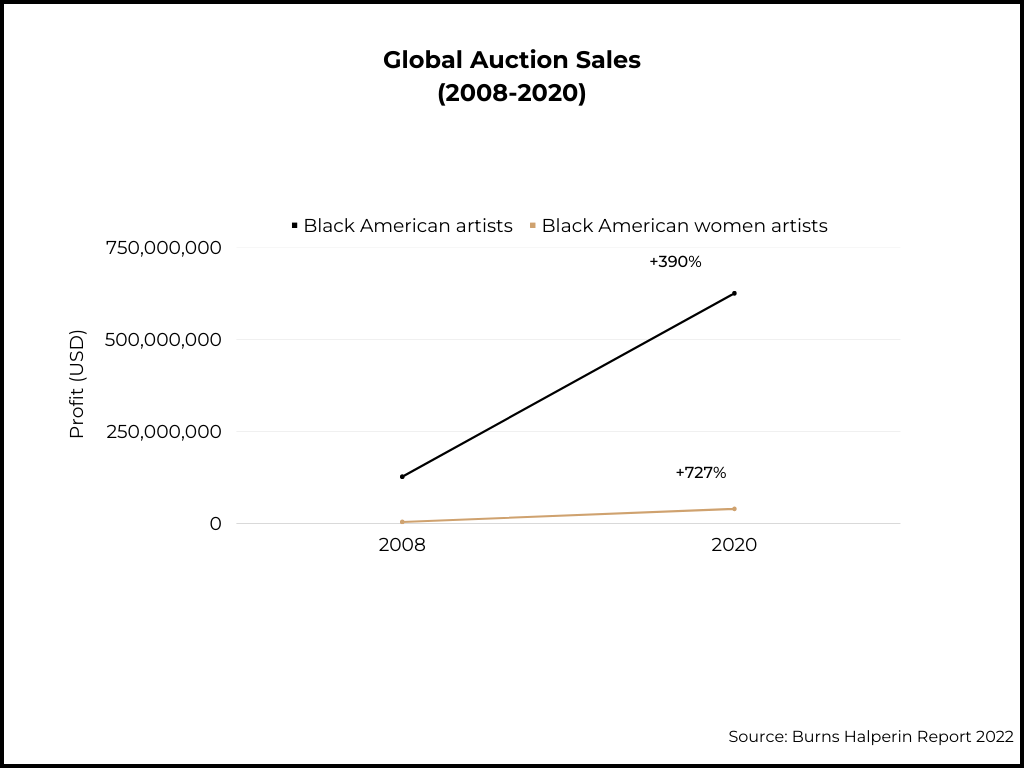
These numbers are shockingly low, but imagine that these are the highest ever recorded totals for Black American artists! Overall, the figures may be improving, but not at the necessary rate to ensure equity in the near future. The pace at which progress is occurring can be exponentially improved, but this will require proactive efforts from art world movers.
The Art World Reacts
Now that you have the figures in mind, we all can ask ourselves: what’s next?
A primary element in this (small) uplift in representation is the Black Lives Matter movement. The social justice organization emerged in 2013, and had reverberations in the art world. Many began calling out the lack of visibility for Black artists and insufficient diversity among staff at museums and galleries. There was a demand for the decolonization of museums: more equitable representation to reflect a more all-encompassing art history and to challenge the erasure of Black perspectives. Between 2014 and 2015 acquisitions of artwork by Black American artists reached their peak, increasing by almost 200 percent.
In 2020, the police killing of George Floyd sparked protests around the world and reignited the Black Lives Matter movement. This time, there was less acceptance towards those saying nothing, and many museums and galleries spoke up in support of racial justice. Official statements endorsing social justice reform, benefit auctions to support Black organizations, and exhibitions created to increase visibility and support for Black artists were some of the responses made by the art world in the aftermath of the protests.
That very same year, Black Lives Matter took the #1 spot on the ArtReview Power 100 list, the annual ranking of the contemporary art world’s most influential people. The first time a movement rather than an individual topped the list, this signals that the justifiable demand for Black voices to be heard is resonating more than ever before.
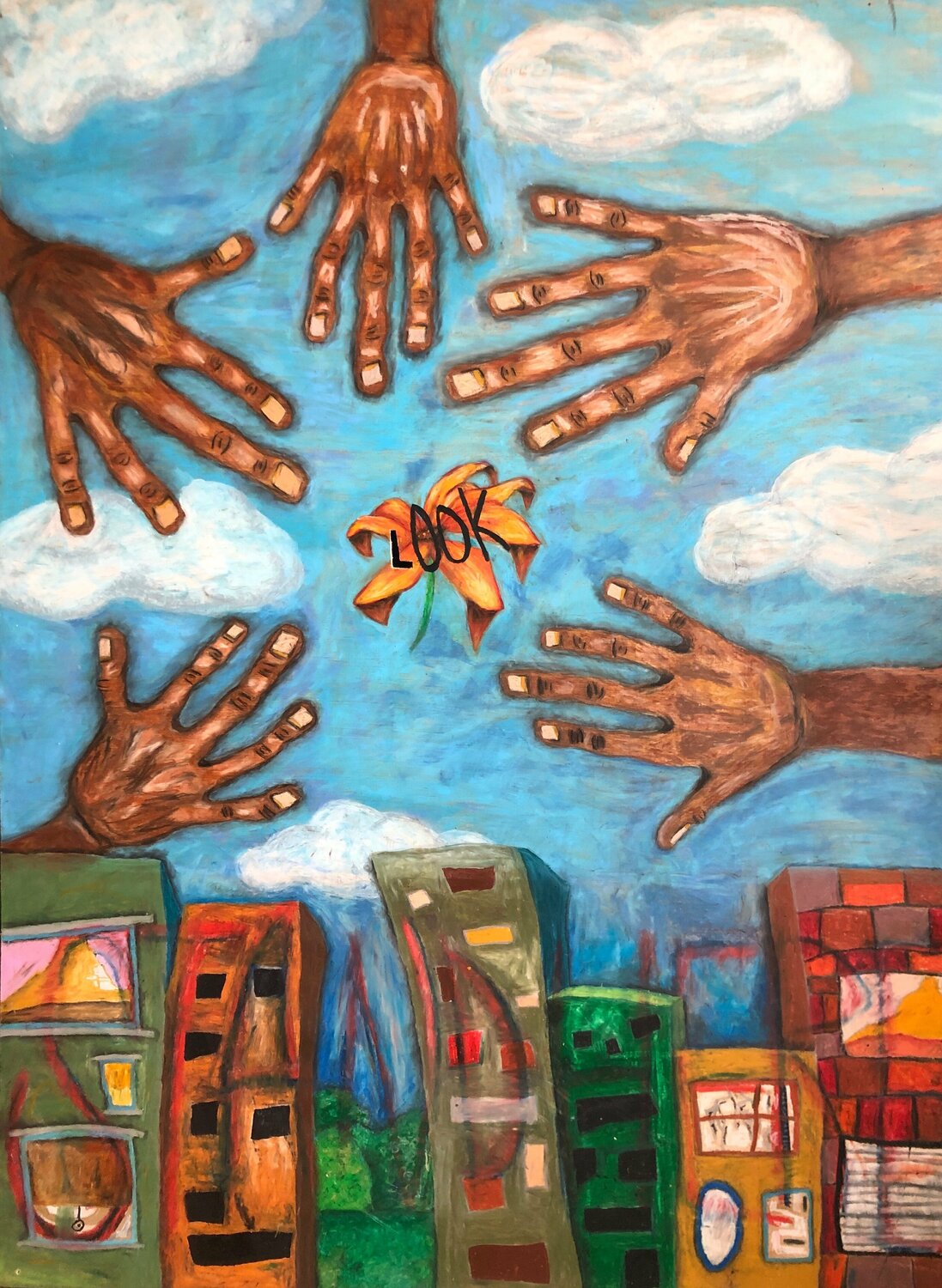
Occurring alongside the ascent of the Black Lives Matter Movement is another example of action with potential for systemic impact: the notable shifting of acquisition politics at a number of U.S. museums. In 2018, the Baltimore Museum of Art shook the art world status quo by selling a number of works from their collection by extremely high-profile white male artists (Andy Warhol and Robert Rauschenberg, for example) in order to create a fund dedicated to acquiring work from minority artists. Many institutions followed suit, such as the San Francisco Museum of Modern Art, who raised $50 million after selling an artwork by Mark Rothko to acquire 91 works by Black artists. In 2019, The Metropolitan Museum of Art announced the acquisition of over 50 works by Black American artists, as part of its commitment to increasing diversity in its collection. The Brooklyn Museum in New York City has also committed to acquiring more works by Black American artists and increasing representation of Black artists in its exhibitions. If leading museums remain dedicated to pioneering change, smaller institutions with less funding or influence may be empowered to do the same, ideally creating a ripple effect that will make inclusion and equitable representation the new normal.
SINGULART’s Mission
While examining the abovementioned art world statistics, we realized that SINGULART is no exception: we were unable to escape the average figures, counting less than 3% of Black artists among our American creators. Now we are ready to roll up our sleeves and contribute to active change, not just this month, but going forward. It is important that we acknowledge and raise awareness of the existing under-representation and inequity throughout the art world. Now let’s take the steps necessary towards a more inclusive one!
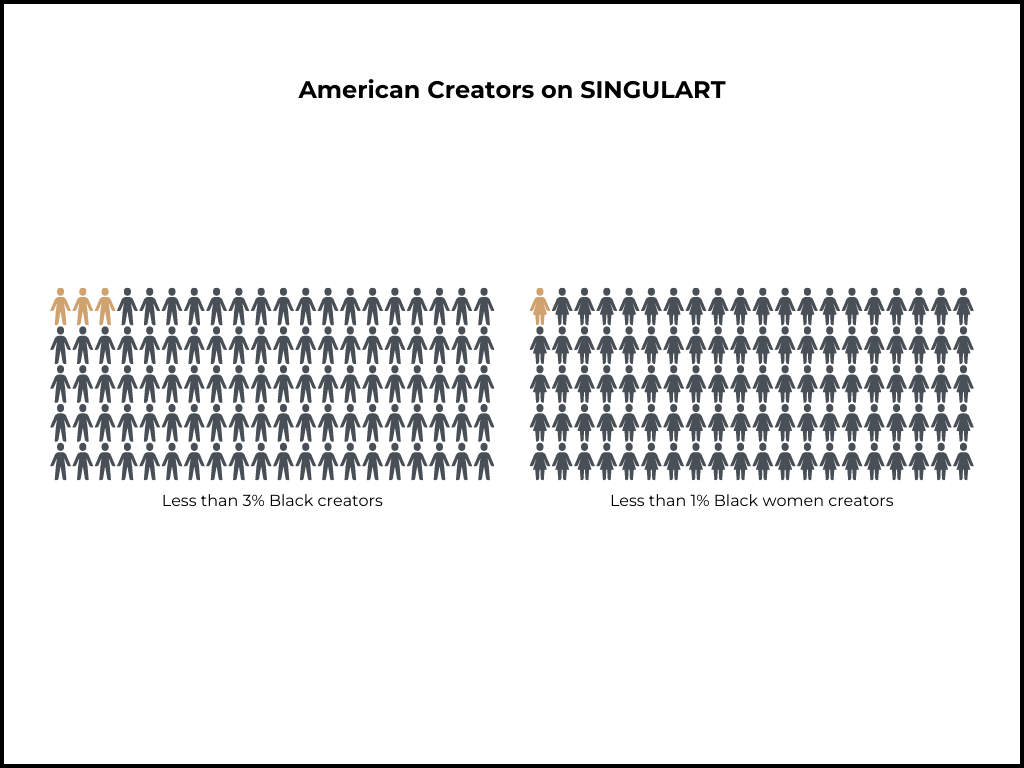
This month, we have collaborated with some of our talented Black American artists, giving them more visibility on SINGULART’s platform, to share not only their artwork, but also their experiences and perspectives. Our goal is to support and celebrate art by our Black creators while sparking important discussions around inclusion in the art world.
During this time, we will gather important insight which we will incorporate as we move forward. We will make an objective analysis and dedicate ourselves to one fight that will lead to measurable results by 2024. Our plan is to gather knowledge and resources to reinvigorate SINGULART’s mission, in order to make a greater impact and initiate lasting change!







